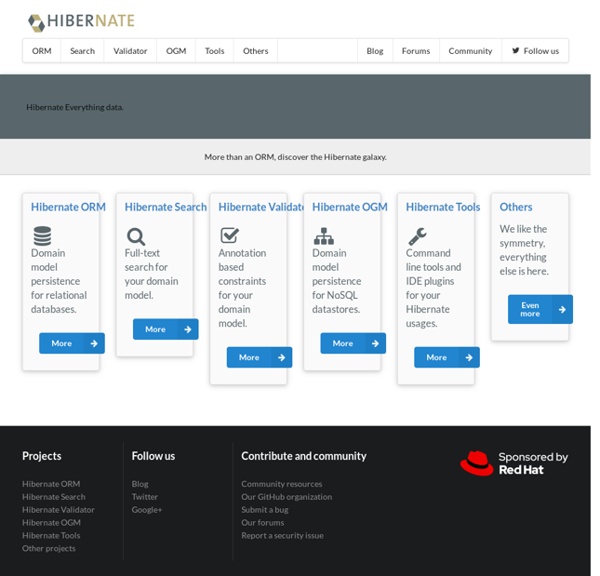Spring Web Flow
The sweet spot for Spring Web Flow are stateful web applications with controlled navigation such as checking in for a flight, applying for a loan, shopping cart checkout, or even adding a confirmation step to a form. What these scenarios have in common is one or more of the following traits: There is a clear start and an end point.The user must go through a set of screens in a specific order.The changes are not finalized until the last step.Once complete it shouldn't be possible to repeat a transaction accidentally Spring Web Flow provides a declarative flow definition language for authoring flows on a higher level of abstraction. It allows it to be integrated into a wide range of applications without any changes (to the flow programming model) including Spring MVC, JSF, and even Portlet web applications. The following are common issues observed in stateful web applications with navigation requirements:
Team Blog
A bit over a year ago we released Vaadin 7 renewing the framework inside out. Then came push support with 7.1. Now what? Let’s take a look into the future. First off, we do not see C# coming up (who is this Nutella guy anyway?).
How to Set the Look and Feel (The Java™ Tutorials > Creating a GUI With JFC/Swing > Modifying the Look and Feel)
The architecture of Swing is designed so that you may change the "look and feel" (L&F) of your application's GUI (see A Swing Architecture Overview). "Look" refers to the appearance of GUI widgets (more formally, JComponents) and "feel" refers to the way the widgets behave. Swing's architecture enables multiple L&Fs by separating every component into two distinct classes: a JComponent subclass and a corresponding ComponentUI subclass.
war plugin
The WAR Plugin is responsible for collecting all artifact dependencies, classes and resources of the web application and packaging them into a web application archive. Usage General instructions on how to use the WAR Plugin can be found on the usage page.
6 Phases of the Web Site Design and Development Process
When putting together the main business portion of this site, I wrote an article that outlines the Six Phases of the Web Site Design & Development Process. As an integral part of my own company web site, the article is slanted to how I personally help clients through the process of creating their own site. Here on the blog, however, I wanted to create a more generalized post. Same basic idea, however this version can be utilized by anyone, regardless of who they hire to design their web site. I hope this helps when considering building your own site!
How to Use Combo Boxes (The Java™ Tutorials > Creating a GUI With JFC/Swing > Using Swing Components)
A JComboBox, which lets the user choose one of several choices, can have two very different forms. The default form is the uneditable combo box, which features a button and a drop-down list of values. The second form, called the editable combo box, features a text field with a small button abutting it.
Index of /cdimage/archive
Last updated: 14th February 2019 Old Debian releases on CD/DVD This is where we store older CD/DVD releases of Debian.
Pragmatic Web Services With Apache CXF
Apache CXF [1] is an open-source Java-based framework whose goal is to help users develop standard-based, interoperable and robust web services. The ultimate goal of writing web services is to ensure that a given web service implementation can be consumed by a variety of design- and run-time clients in an interoperable and effective manner. A lot has been written recently about how web services have to be designed.
The 5 Foundation Stages in Web Design at DzineBlog
Learn how to earn $125 or more per hour as a freelancer - Click Here Looking for hosting?. We recommend MediaTemple for web hosting.
The Java EE 7 Tutorial:JavaServer Faces Technology
JavaServer Faces technology is a server-side component framework for building Java technology–based web applications. JavaServer Faces technology consists of the following: An API for representing components and managing their state; handling events, server-side validation, and data conversion; defining page navigation; supporting internationalization and accessibility; and providing extensibility for all these featuresTag libraries for adding components to web pages and for connecting components to server-side objects


